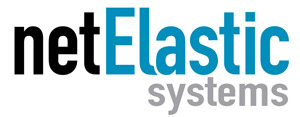Network scalability has never been more critical, as people depend on the Internet for more aspects of their personal and business lives. This creates an opportunity and a challenge for broadband providers since traditional network infrastructure wasn’t designed to scale quickly or reliably to meet increasing demand.
What should a broadband provider do?
Let’s Explore the Options
Many small broadband providers use MikroTik routers, a good choice for small networks. MikroTik sells very affordable routers for the small ISP market.
The challenge with MikroTik routers is that broadband providers tend to outgrow them since each router has limited scalability. Purchasing new MikroTik routers continually is usually not an appealing solution, given the headaches involved in managing an increasing number of routers.
Softcom, a Wireless Internet Service Provider (WISP) based in Galt, California, was experiencing a 30% increase in bandwidth usage and was concerned by the lack of scalability provided by their MikroTik routers. Softcom’s Chief Technology Officer (CTO) Brian Meredith said, “Our equipment wasn’t scaling very well, and we were experiencing traffic drops, which was negatively impacting our customer experience.”
Other Alternatives
Given MikroTik’s scalability issues, it’s only natural that broadband providers would look at the large router manufacturers, Cisco and Juniper. While performance isn’t an issue with these routers, costs certainly are.
After looking at other routers to replace MikroTik, Softcom’s Brian Meredith said, “We were looking at the obvious players in the market, Cisco and Juniper, hardware-based solutions that got pretty expensive when you added in licensing costs. While they’re good solutions, it’s tough to justify in a business like ours where we don’t have an unlimited budget. We have to find something that’s cost-effective but works really well,” explained Brian.
Changing the Router Game: Network Virtualization

Traditionally, routers have been sold as vertically integrated hardware solutions, combining software and hardware into one big branded appliance, with companies like Cisco and Juniper dominating the market.
Network virtualization aims to counter traditional network routers’ high costs and inflexibility by decoupling network functions from proprietary hardware appliances. With networking resources separated from the physical infrastructure, you don’t have to purchase additional hardware appliances whenever you need additional network capacity. As a result, broadband providers can quickly add network capacity with a few simple commands.
Virtual Broadband Network Gateways
As a pioneer in network virtualization, netElastic was one of the first vendors to develop a software-based (or virtual) broadband network gateway (vBNG), which runs on commodity x86 servers. netElastic vBNG separates the control plane and data plane so each can be scaled independently of the other, enabling flexible capacity expansion without restrictions from either plane. The data plane is also optimized to deliver maximum performance on x86 platforms.
With its software-defined networking (SDN) architecture, netElastic’s market-leading scalability and performance support up to 128,000 subscribers per vBNG, with throughput up to 1 Terabit on a 2RU server.
Real World Results
Harbour ISP has been providing internet services in Australia since 2005. Before embarking on a network upgrade, Harbour used MikroTik routers, which could only handle approximately 1,500 users (a small percentage of its total user base). This meant it had to manage dozens of MikroTik routers to support all its customers, which became challenging.
Harbour ISP began evaluating alternatives, starting with the Cisco ASR Series Router. While the Cisco solution possessed the scalability and reliability Harbour needed, it came with a hefty price tag. In addition, Cisco had many features that Harbour didn’t need, which made the high cost even harder to justify. Harbour ISP chose netElastic vBNG for its greater scalability, flexibility, and much lower costs than Cisco.
Compared to the limited scalability provided by their previous MikroTik routers, Harbour ISP found that netElastic vBNG supported three times as many users (with room to grow to 10x). Harbour ISP also gained a four-fold increase in throughput with vBNG. As a result, Harbour ISP is now delivering ultra-fast broadband services to its subscribers. Tom Bishop, Harbour ISP’s Chief Technology Officer (CTO) said, “The performance, scalability, and stability of the vBNG along with support from netElastic have been keys to our network success.”
Where does netElastic vBNG Fit in the Competitive Landscape?
netElastic vBNG offers greater scalability than MikroTik routers and much lower costs than the large router manufacturers (Cisco and Juniper). Large router manufacturers bundle BNG software with their dedicated hardware, which increases costs. These routers also lack scalability since you must purchase additional hardware appliances when their capacity limit is reached.
Growing Pains

Telpin is a high-speed internet service provider in Argentina, serving customers for over 50 years. Their customer base was growing, and customers were constantly using more bandwidth. As a result, the company was nearing capacity limits with their Juniper and Huawei access routers, which were also expensive to support and nearing end-of-life.
The Juniper and Huawei hardware-based routers weren’t very scalable since they had to be upgraded or replaced to handle the increased workload. However, Telpin wasn’t interested in a one-time increase in capacity. They wanted the ability to add capacity as network demands warranted. However, given the limited flexibility of hardware-based routers, this meant Telpin would have to purchase more legacy routers than they needed (overprovision) to ensure they could meet peak traffic periods in the future. Obviously, this wasn’t a good use of their money.
After careful evaluation, Telpin decided to go with netElastic vBNG. According to Martin Pagano, Telpin’s CEO, “vBNG’s scalability will allow us to keep pace with network demands from our expanding subscriber base. Best of all, we won’t have to continually replace our infrastructure.”
Based on their success, Telpin plans to replace more legacy routers with netElastic vBNGs to eliminate the high maintenance costs. “Telpin exists to bring people together through reliable communications. If we can get the same performance as our legacy access routers at lower costs and with greater scalability, there’s no reason not to buy additional vBNGs,” concluded Telpin’s Pagano.
A Typical Path for ISPs in Brazil

FiOS Tecnologia is a growing Brazilian internet service provider whose mission is to increase the availability of fast, reliable internet access in the Amazon region of Brazil, which is home to over 4 million people.
Like many regional ISPs in Brazil, FiOS started by using MikroTik routers. While these were sufficient initially, limitations on the number of concurrent PPPoE sessions became a problem. As FiOS continued to grow its subscriber base, the MikroTik routers could only support about 1,500 PPPoE sessions. When FiOS exceeded that amount, they experienced occasional crashes (with the PPPoE service).
FiOS looked at traditional router vendors such as Cisco, Juniper, and Huawei to solve these challenges. However, these solutions came with expensive price tags and didn’t include CGNAT capabilities. After considering multiple vendors, FiOS decided to go with netElastic vBNG.
vBNG runs on commodity x86 servers, eliminating vendor lock-in and providing significant cost savings. Lucio Costa, Founder and CEO at Fios, said, “The cost savings of vBNG allowed us to purchase two servers to ensure high availability, which was equal to the price of one Huawei router. And the Huawei router didn’t even include an optional CGNAT, unlike the netElastic virtual router.”
As FiOS continues to grow, netElastic vBNG will be crucial to that growth. According to Lucio, “The best part of netElastic vBNG is the price of licenses, which gives ISPs the opportunity to grow their businesses with quality and stability similar to solutions that are ten times more expensive.”
The Next Step
To learn more about how broadband providers worldwide are increasing network scalability and flexibility (and lowering costs), please read some of the following customer stories:
Softcom – a WISP in California
Telpin – an ISP in Argentina FiOS Tecnologia – an ISP in Brazil

